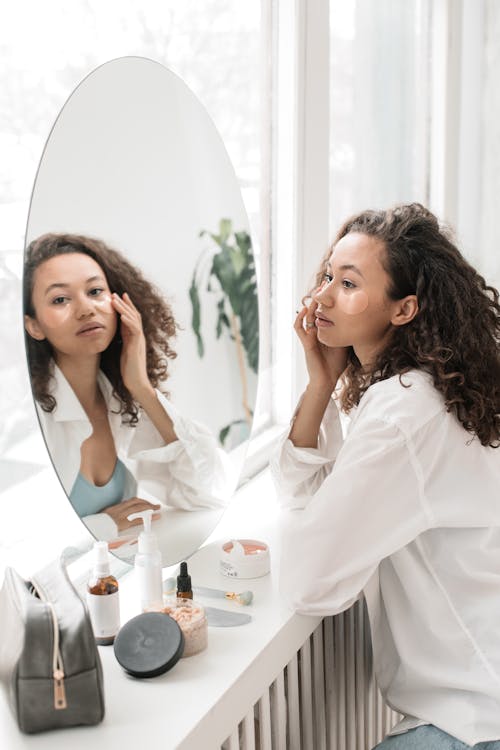We are lucky to live in an era with rich technology advancements and innovations to take care of our beauty. A wide range of skincare products is within our reach, with various offerings that cater to our different skin types and skin issues.
While it is okay to explore and experiment to find the best skincare products that could work for you, it is a lot smarter to do your research and educate yourself beforehand which skincare ingredients would do you good. Know your skin type first, and be patient with reading the labels of products because it can certainly make a world of difference to your skin.

A common skincare regimen requires layering different products, so you should be aware what are the contents of each of the skincare products you are using. This is so you’d know if one would clash with another.
Some of the common skincare contents are “active ingredients”.
Active Ingredients are self-communicating ingredients that once applied to skin can send signals to your skin cells to do a particular thing. Each one focuses on your target goals, such as maybe skin brightening, minimizing hyperpigmentation or preventing premature aging. Active ingredients are effective, but some when mixed together could also be a little too much for those who have sensitive skin.

Next time you go shopping for skincare products, make sure to note which active ingredients just do NOT work well together:
1. Retinol and AHA
Retinol is a vitamin A derivative used to treat skin aging and acne. Instead of removing dead skin cells as many other anti-aging and acne products do, the small molecules that make up retinol go deep beneath the epidermis, our outer layer of skin; and deeper into dermis. Once there, retinol’s molecules neutralize free radicals to boost the production of elastin and collagen.

Meanwhile, AHA or alpha–hydroxy acids are water-soluble acids made from plants, sugary fruits or animal-derived solutions. They help peel away the surface of your skin, so that new skin cells may generate for a smoother feel.
Both retinol and AHA have anti-aging benefits and act as skin exfoliators. But retinol is a powerful ingredient and does the work alone. So if you mix retinol with AHA, the mix could cause dryness and severe irritation on your skin!
2. Retinol and BHA
BHA or beta hydroxy acid is best for acne-prone skin and those with deeper skin concerns since BHA penetrates further into the skin. They can bypass the oil that clogs pores and dissolve the mix of sebum and dead skin that leads to acne. BHAs clear up blackheads, whiteheads, and have anti-inflammatory and antibacterial properties.
Retinol is a peeling agent, while BHA is a great exfoliator. If you apply these two active ingredients at the same time, it could result to over-dryness in skin. However, you may opt to separate the two, and use one for your daytime skincare routine and the other for your nighttime regimen.
3. Retinol and Vitamin C
Retinol mixes well with products that are antioxidants, but think twice before mixing it with Vitamin C.
Retinol works better on neutral environment like a Ph of 5, while Vitamin C works well in acidic environment. Mixing these two active ingredients would just neutralize each other and cancel their benefits. So if you don’t want to waste your money, never use these ingredients at the same time.
4. Vitamin C and Niacinamide (Vitamin B3)
Niacinamide, also called nicotinamide, is a form of vitamin B3. It helps in building keratin, a type of protein that keeps your skin firm and healthy. It can help your skin grow a ceramide (lipid) barrier, which can in turn help in retaining moisture. It is also applauded for reducing inflammation, which may help ease redness from eczema, acne, and other inflammatory skin conditions.
Vitamin C once applied into the skin can encourage new collagen to grow. Our bodies slow down collagen production as we age, and vitamin C helps in maintaining the collagen we do have, as well as protects the protein in our skin from damage.
Niacinamide and Vitamin C, when used in two separate products and applied improperly, could not go well. Both give almost the same results to the skin so they might compete with each other, which then might cause skin irritation. However, if both Vitamin C and Niacinamide are present in one product and of course are formulated in the lab by chemists, then that product is completely fine to use!
5. Vitamin C and AHA
Mixing AHA and Vitamin C would cancel each other’s effect, as the latter is pH sensitive and is very unstable. So mixing it with AHA like glycolic and salicylic acid would just neutralize it before it could even have effects on your skin, rendering it useless.
If you want to use more than one active ingredients in your skincare routine, look for a product that has already two active ingredients in it. They are already stabilized and formulated in the lab, and the product was usually tested several times before deemed perfectly safe to be released by skincare professionals and used by the market.
With all these promising skincare products present in the market, we might get a little too excited and go on trying everything that is “good” for the skin. That’s why we should first educate ourselves about our skin type and our needs, and what ingredients might be helpful or harmful to us. Doing our research can save our skin from further damage, as well as help us save our money.
